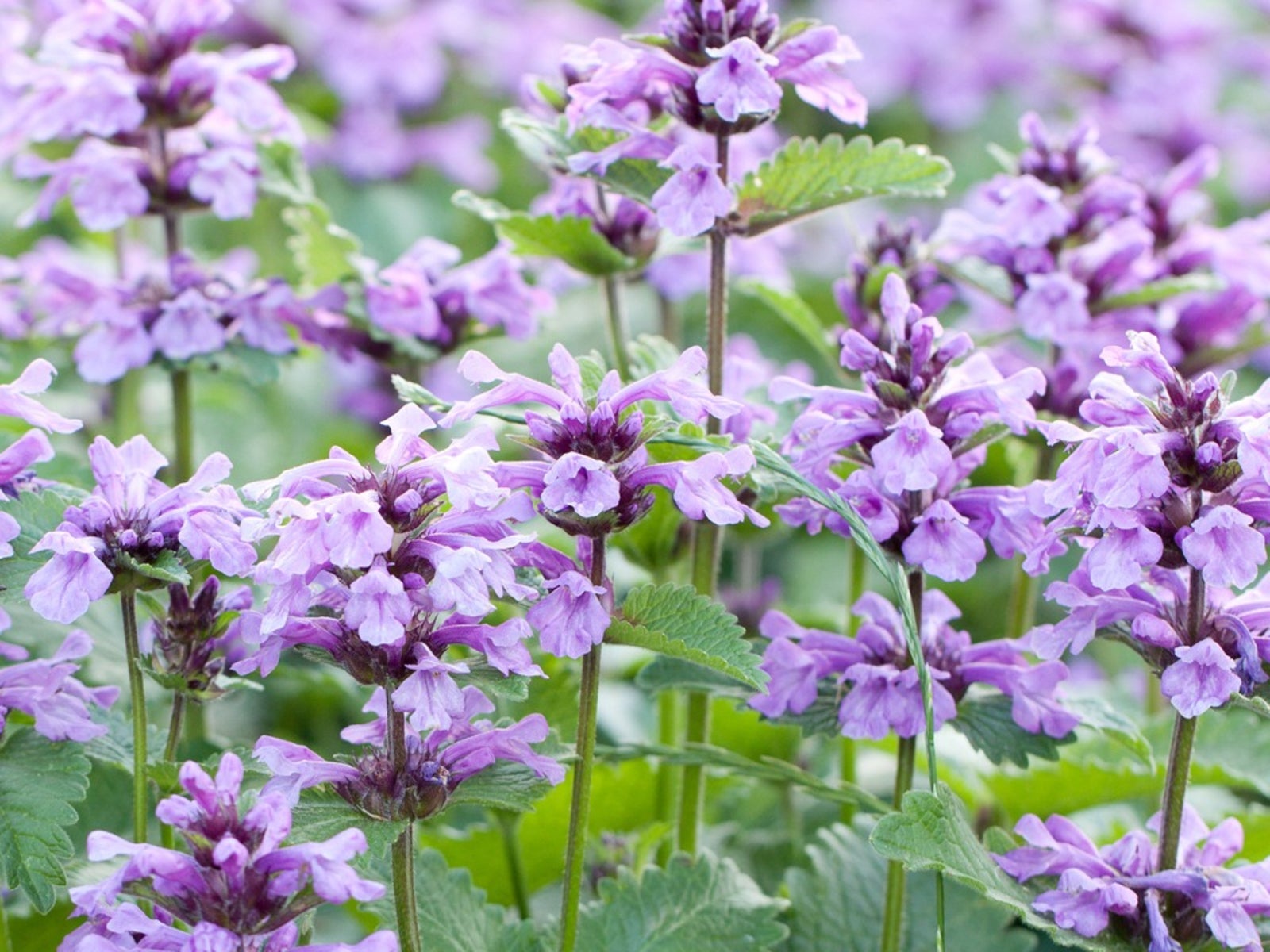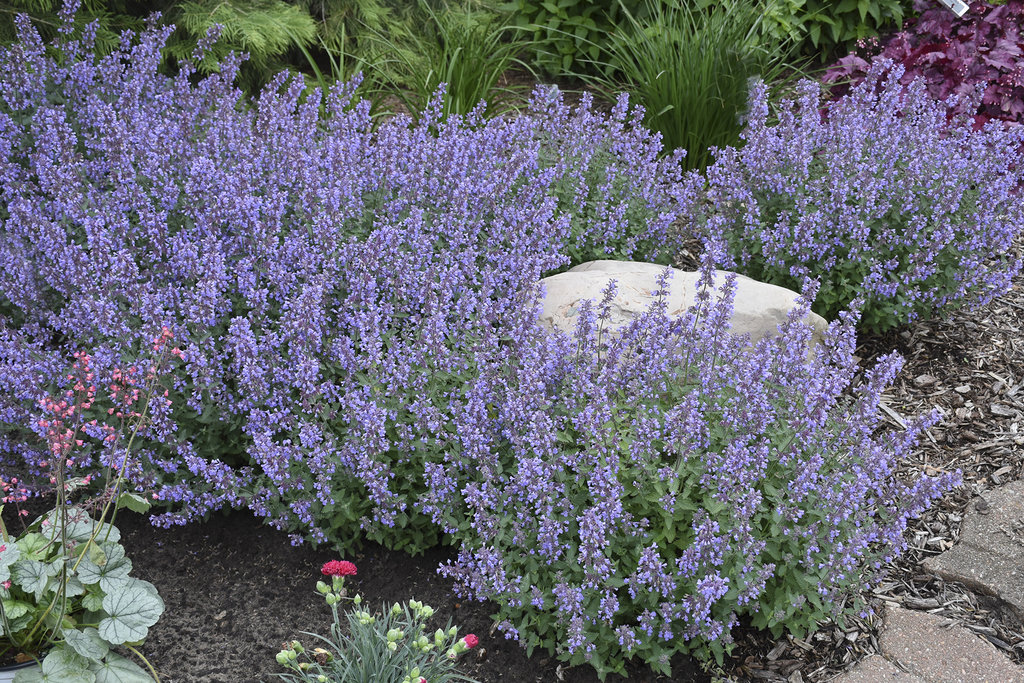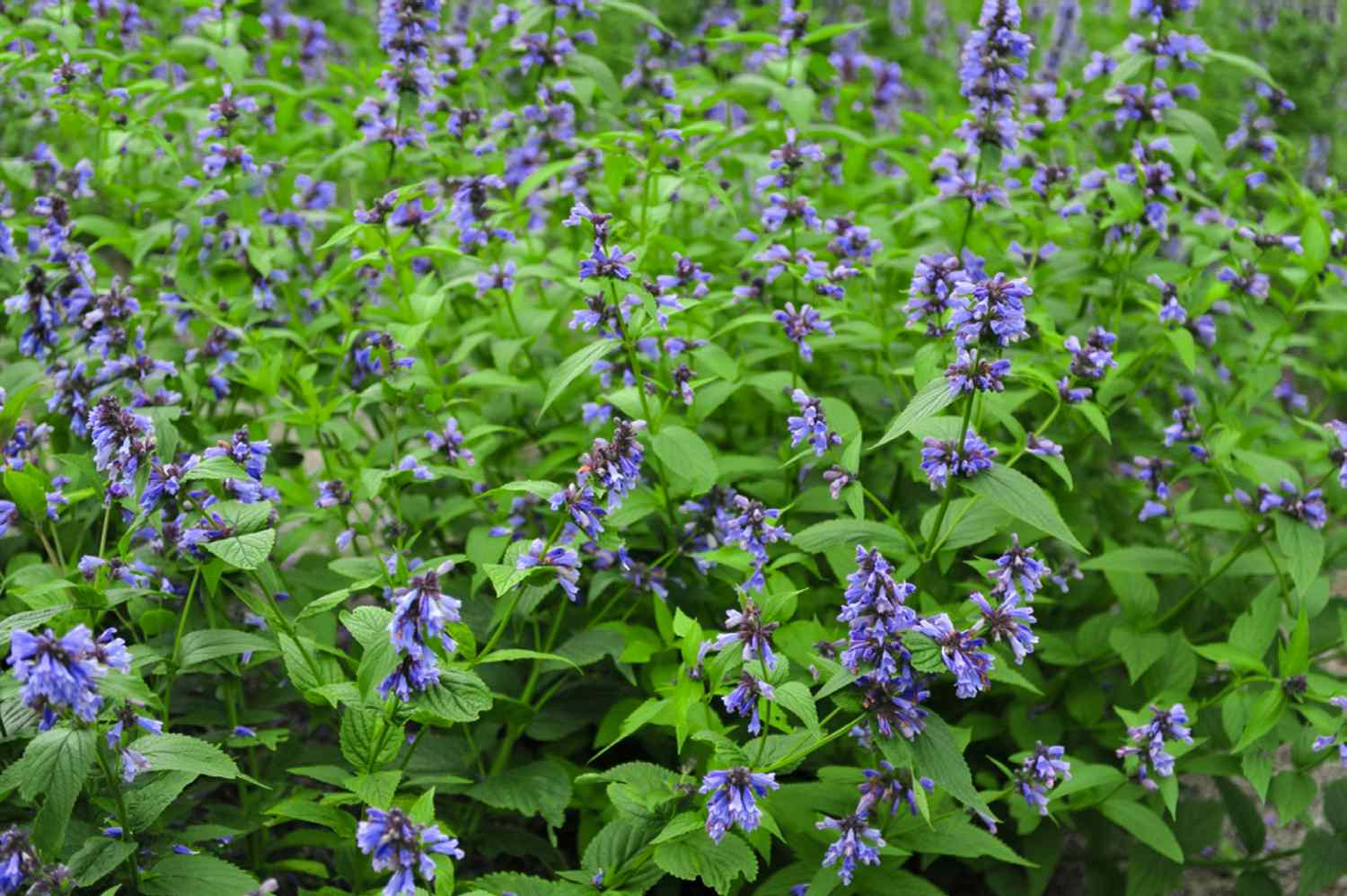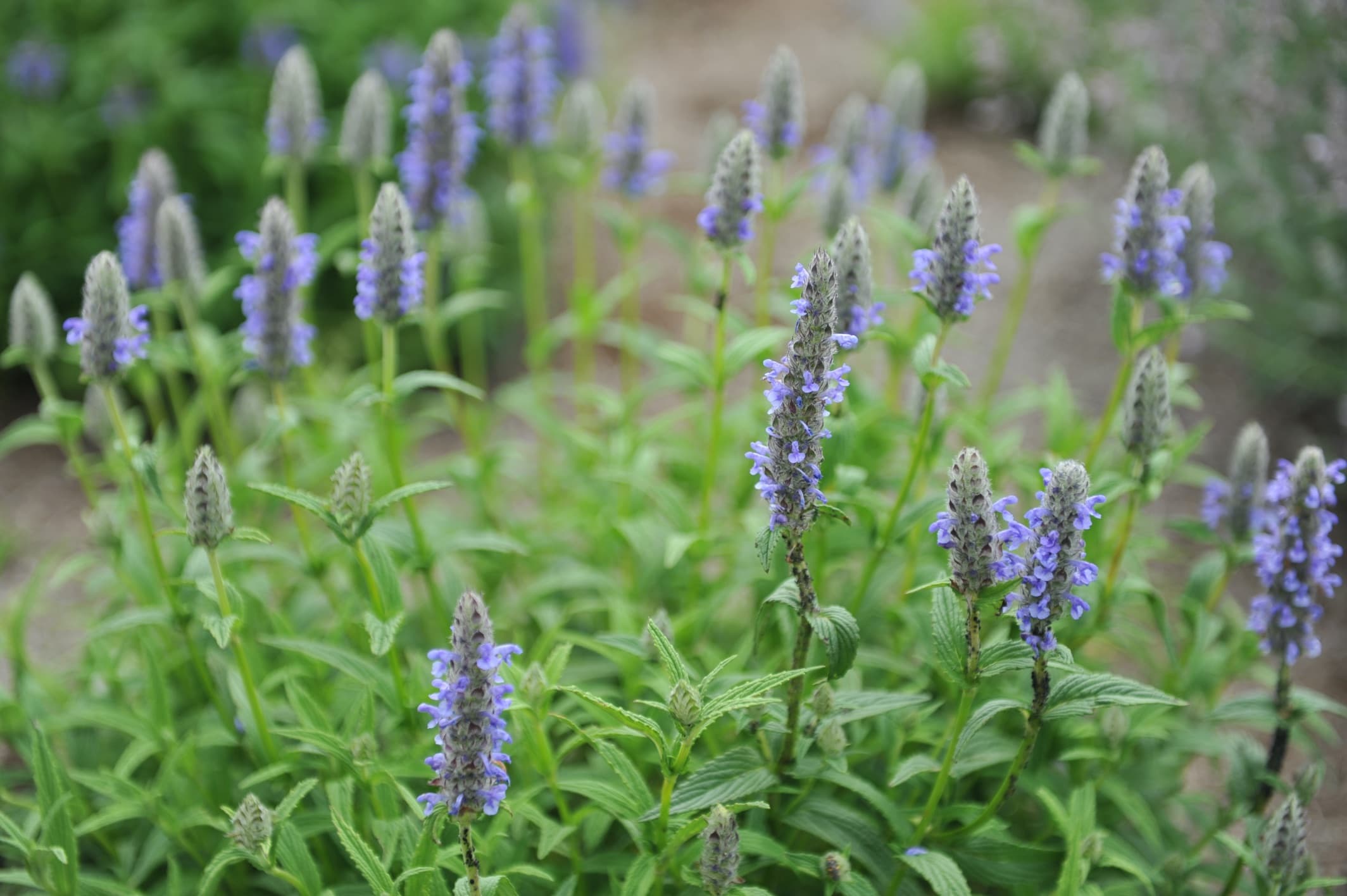Catmint is one of the most beautiful, low-maintenance perennials you can add to your garden. It’s incredibly resilient, thriving in sandy, clay, or rocky soils. This fast-growing perennial is nearly perfect, featuring long-lasting blooms and a lifespan that requires little to no care.
Pollinators, including bees, butterflies, and hummingbirds, are drawn to catmint’s spikes of purple-blue flowers that bloom from late spring to early fall. As a member of the mint family, catmint’s strong fragrance also deters rabbits and deer. Once established, this quick-growing plant is both heat- and drought-tolerant.
With its attractive clumping habit, catmint is versatile in garden landscapes, working well along walkways, in garden beds, or in containers. Its abundance of purple flowers makes it an excellent alternative to lavender, which can be difficult to grow in certain regions, particularly the Southeast. Recent years have seen the introduction of many new catmint varieties, including more compact options that maintain a neat, mounded shape.
Catmint vs. Catnip
Catmint is often mistaken for catnip (Nepeta cataria), a closely related plant. While catnip is aromatic, it is much less ornamental and has a weedier appearance compared to catmint.

Catmint Care
Catmint is an excellent addition to perennial gardens due to its minimal care needs once established. The bloom time is exceptionally long, and when the first flush of flowers starts to fade, deadheading can encourage reblooming. Catmint is also edible, with leaves that can be steeped to make a minty tea.

Light
Catmint thrives in full sun, which means at least 6 hours of direct sunlight per day, though it can handle some afternoon shade.
Soil
Catmint adapts to a variety of soil types, including clay, sand, and rocky soils.
Water
Newly planted catmint should be watered during the first season to help it establish. Once established, catmint generally does not need extra watering unless there is a drought.
Fertilizer
Fertilizing catmint is unnecessary and can even lead to poor flowering or floppy plants. If plants become leggy or fall over, trim them back by about a third to rejuvenate growth.
Pests and Diseases
Catmint is practically free of pests and diseases.
How to Propagate Catmint
To keep catmint vigorous, you can divide it every few years. In early spring, use a shovel to separate a section from the edge of the plant, then replant it elsewhere in your garden. Water the new section regularly during the first season, especially during dry spells, to help it establish.

Companion Plants for Catmint
Catmint is lovely on its own in containers or as edging along paths and beds, but it also pairs beautifully with other sun-loving perennials. It’s a great alternative to lavender for those who enjoy lavender’s color and form but find it challenging to grow. Good companion plants include roses, peonies, salvia, lamb’s ear, and perennial geraniums.

Popular Varieties of Catmint
- ‘Walker’s Low’: Features abundant indigo blooms that last up to five months.
- ‘Whispurr Pink’: A pink variety with pale pink, extra-large flowers and silver foliage.
- ‘Cat’s Pajamas’: A compact variety reaching about a foot tall and 20 inches wide.
- ‘Junior Walker’: Grows up to 18 inches tall with a neat, mounded shape and silvery foliage.
- ‘Six Hills Giant’: Known for its large blue flowers, reaching up to 3 feet tall and 4 feet wide; a vigorous grower.
